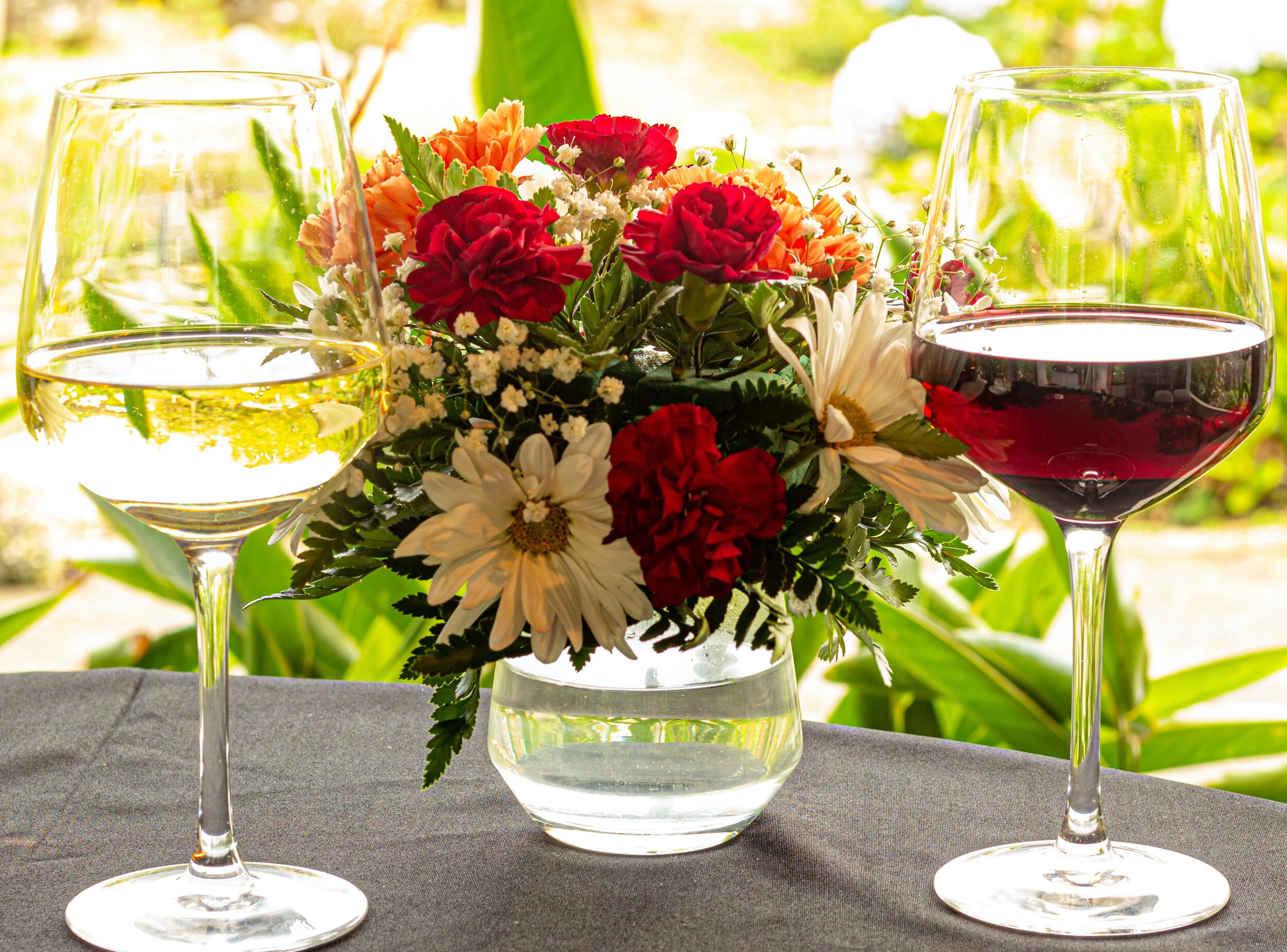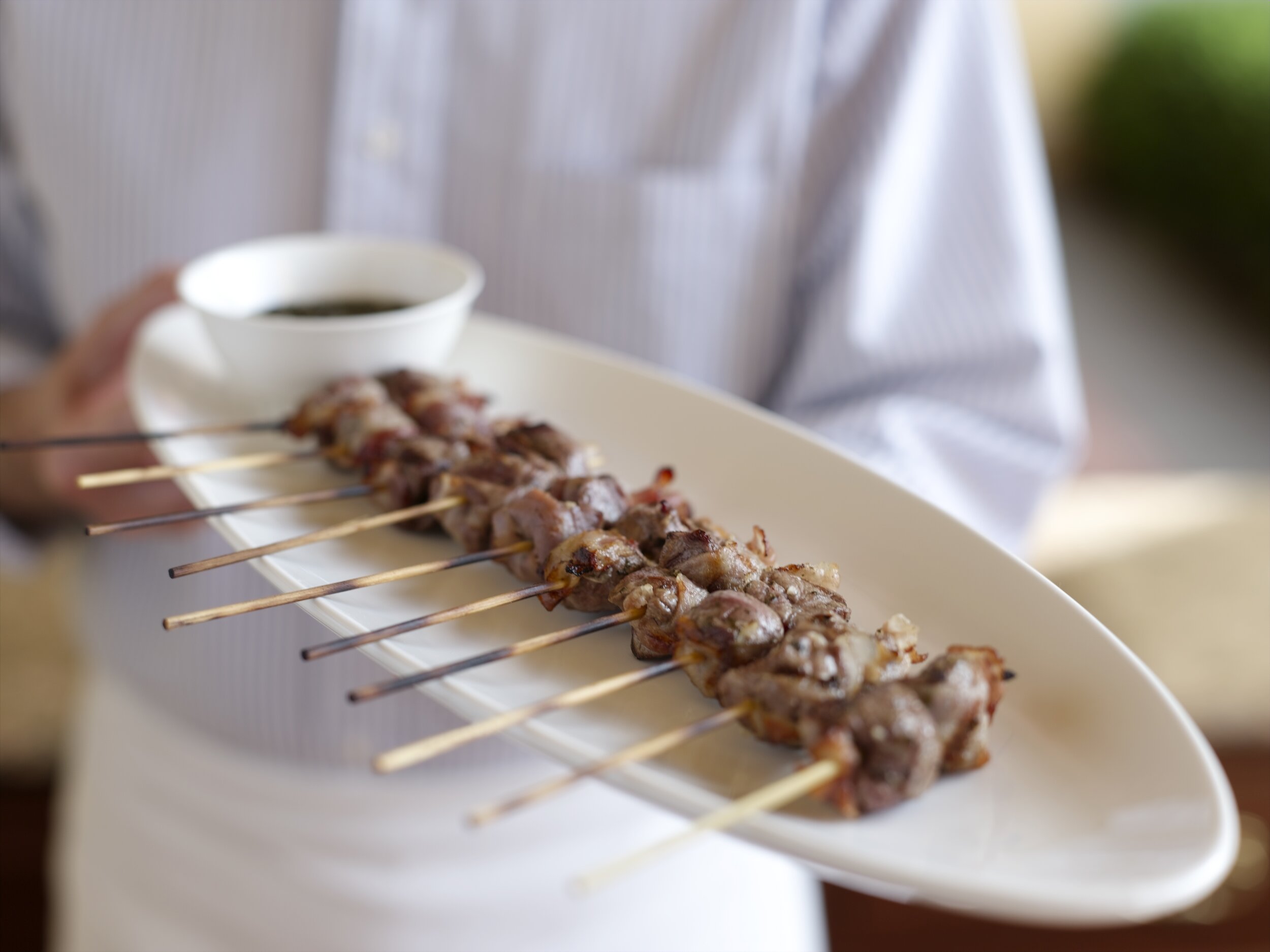Wine Pairings and Recipe Inspiration For 4 Favorite Spring Ingredients
photo Fran Hogan, via Unsplash
Uncork a bottle and get excited about what’s fresh and flavorful right now to pair with it
The days are growing warmer, the nights are getting longer, and we’re more than ready to trade in winter produce that grows deep in the earth for vibrant, verdant veggies that pop out of it. Don’t miss out on what’s currently and perfectly in-season at the farmer’s market, butcher shop, or grocery store by gathering around the table to savor a dish that uses one of spring’s irresistible ingredients. Of course this is a good time to open a divine wine to go along with it!
Artichokes
Those with the patience to take the time to trim the outside and remove the prickly choke at the core of this relative to the thistle are rewarded with the unique flavor of the “meat” on the leaves and the tenderness of the heart of this ingredient. Some of the most simple and satisfying ways to enjoy it are to steam it, coat with olive oil and sea salt, or grill it and dip its leaves in melted butter. You can also use it in salads, dips and pasta dishes. For something more impressive, make torta pasqualina, an Italian puff pastry-crusted pie filled with ricotta, artichoke and eggs that’s traditionally made in thirty-three layers at Easter time and serve it with a Brut sparkling wine from the Trentodoc in Northern Italian. These traditional method sparkling wines have a touch of bitter almond on the finish to go with the slightly bitter artichoke and their effervescence can cut through the richness of butter or cheese. Dry white wines with marked acidity, like sauvignon blanc, or Verdicchio from Italy, are also great pairings.
Bottles to try:
Rotari Brut ($22), made from high altitude vineyards in the Trentodoc in Italy’s northern Alto Adige region which keeps it fresh and elegant; pineapple, green apple and white floral aromas are followed by a full and viscous mouth feel and tart pleasant finish.
Ferrari Brut ($22), a chardonnay-based bubbly from the Trentodoc that tempts with lemon, apple, lime and yeastiness.
Langlois-Château Sancerre 2019 ($27), from one of the Loire Valley’s leading producers, this sauvignon blanc shows bright citrus and green apple tartness, with balanced minerality on the palate, and a honeyed, yet flinty finish.
Ben Fink The Culinary Institute of America
Lamb
Tender and succulent, lamb is the protein this season whether you are grilling chops with rosemary and lemon for a starter or coating a leg with goat cheese and breadcrumbs, searing and roasting it for a main course. The meat is delicate, yet full of umami, and is best served medium-rare so it’s tender and juicy. Sparkling or still rosé is a winning combination with it, as the former will serve as a palate cleanser and will also offer a bit more weight and structure than a white. Some reds can be too heavy with it, however, the earthiness of lighter-style pinot noir complements the meat’s mild gaminess, while the mild austerity of a medium-tannin merlot or a Portuguese red blend will serve as a foil for the layered of seared fat on the lamb’s exterior.
Bottles to try:
La Crema Russian River Valley Pinot Noir 2017 ($40), with aromas of black plums, fresh raspberries and forest floor, balanced acidity and a concentrated palate of bing cherry and baking spice.
Mionetto Rosé Extra Dry Prosecco ($11), intensely fragrant and delicate with wild strawberry, cherry, raspberry and violet and a fine perlage.
Fleurs de Prairie Côtes de Provence Rosé ($17), pale salmon with flavors of strawberry, rose petals and herbs and refreshing acidity.
DFJ Vinhos Portado Red Blend 2018 ($8) - can you believe that price? This juicy, value-driven sipper comprised of both native Portuguese varietals (touriga nacional, caselão, tinta rouriz) and traditional grapes (such as cabernet and pinot noir) over delivers in bright flavor and structure. This was a double gold medal winner in the 2020 Berlin International Wine Competition.
Recipe to try:
Red wine-marinated lamb brochettes on fresh rosemary skewers
Recipe courtesy of the Culinary Institute of America
Makes 12 10-inch brochettes
1 ½ lb. lean lamb, cut into 1-inch cubes
¼ cup extra virgin olive oil plus additional as needed
5 garlic cloves, sliced
1 lemon, zested
½ cup red wine
1 bay leaf, bruised
6 rosemary stems, bruised with the back of a knife
2 teaspoons chili flakes
12 rosemary skewers (10-inches each)
salt and ground black pepper, to taste
In a bowl, combine the lamb with the olive oil, garlic, lemon, red wine, bay leaf, rosemary stems and chili flakes. Mix well, cover and refrigerate for an hour.
Divide the cubed lamb equally among the skewers, making sure to scrape all the solid marinade ingredients from the lamb. Brush each brochette with olive oil and season with salt and pepper. Grill brochettes on a medium-high grill to desired doneness, rest for 1 minute and serve.
Christine Siracusa via Unsplash
Asparagus
One of the most beloved seasonal ingredients, asparagus is great steamed and topped with a dollop of Hollandaise sauce, sautéed and tossed into pasta primavera or grilled with olive oil and sea salt. Unfortunately, this ever-popular vegetable is also one of the most notoriously tricky ones to pair with wine thanks to its pungent herbaceous. Steer clear of whites that are high in alcohol or heavily oaked as well as big reds, all of which can make both the asparagus and the wine taste funky including lending them a metallic “off” flavor. Crisp, peppery grüner veltliner is a solid choice. This is also another perfect match with a springy sauvignon blanc—this time from New Zealand or Chile—which tend to be assertively acidic and tend to share the vegetable’s herbaceous overtones.
Bottles to try:
Domäne Baumgartner Grüner Veltliner 2018 ($19), dry on the palate with hints of citrus, pepper, white pepper and minerals, with a juicy and refreshing finish. This wine won a Silver medal at the 2019 NY International Wine Competition.
Domäne Wachau Grüner Veltliner 2018 ($15) - this versatile white matches the challenging grassiness of asparagus, but is also a terrific spring porch pounder to sip as an aperitif.
Dog Point Vineyard Sauvignon Blanc 2019 ($25), made with hand-picked 100% organic estate-grown grape at low yields; expressive, silky and perfumed with citrus and herbs and a touch of flint and smoke.
Brancott Estate Sauvignon Blanc 2018 ($14), unabashedly acidic with overt vegetal, grassy and citrus notes and a tart finish. This wine won a Silver medal at the 2019 NY International Wine Competition.
Recipe to try:
Roasted asparagus with parmesan and lemon
Recipe courtesy of Kelly Magyarics
1 pound asparagus, trimmed of the woody parts
1-2 tablespoons good quality olive oil
Sea salt and freshly ground pepper, to taste
Zest of 1 small lemon
1 tablespoon freshly grated parmesan
Preheat the oven to 425 degrees Fahrenheit. On a baking sheet toss the asparagus with the olive oil and season with salt and pepper. Roast for 15-20 minutes, stirring occasionally, until browned and lightly charred. Season with additional salt if desired, top with the lemon zest and parmesan cheese and serve.
Rachael Gorjestani via Unsplash
Peas
If you’re still hanging onto childhood memories of mushy canned peas, think inside the pod. Spring peas have an irresistibly al dente crush and a fresh taste that make them perfect blanched, sauteed and served with flaky butter-roasted haddock, pureed into soup and even tucked raw into salads. David Lee, executive chef and co-founder of plant-based restaurants Planta in Miami and Toronto, who uses them along with asparagus in a soup that’s cooked and then puréed, recommends serving a textured white chardonnay or chardonnay blend alongside, which will match the interior texture of the vegetable; expressions with citrus notes will mimic adding a sprinkle of lemon zest to the dish.
Bottles to try:
Smoke Tree Chardonnay 2018 ($20) - this pick from Sonoma is a solid choice for balanced minerality with slightly floral undertones and stone fruit flavors.
Mer Soleil Reserve Chardonnay 2018 ($20), from the Santa Lucia Highlands come this bright, lush and layered wine with hints of lemon squares, honeycomb and toasted wood.
Frescobaldi Pomino Bianco 2018 ($18) - this blend of chardonnay and pinot bianco from Tuscany has notes of white flowers, green apple, pear and grapefruit, with a fresh, yet soft mouthfeel.
Domaine William Fèvre Chablis 2018 ($25) - a very classic style from Burgundy, with both stone and bright citrus fruits adding zing to the palate. It would be especially fitting with the following recipe, which has tangy notes from nutritional yeast and garlic.
Recipe to try:
Spring Peas and Asparagus Soup
Recipe courtesy of David Lee, Executive Chef & Co-Founder, Planta
2 cups fresh spring peas, shelled
2 cups asparagus, trimmed and chopped into 2-inch pieces
5 cups water
1 tablespoon nutritional yeast
1 clove garlic
1 bay leaf
½ red onion, chopped
Kosher salt, to taste
Bomba chili, caper, basil or cilantro, to garnish
Bring all ingredients except garnish to a boil in a large stockpot, reduce heat and simmer for 30 minutes. Remote from the heat and blend slowly in a Vitamix or other high-powered blender. Garnish as desired and serve.




